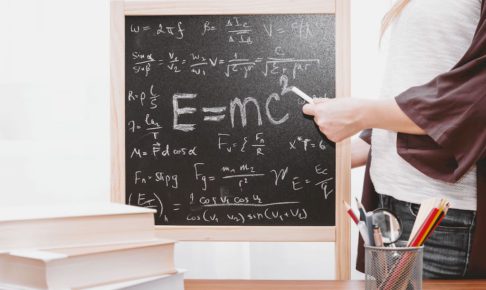✨ ベストアンサー ✨
全体は難しいのでかいつまんで説明します。
英文を読むと、
ニルス・ボーアはノーベル物理学賞を取ったんですが、そのボーア理論の内容が前半にあります。それが図3Aです。
同心円状に電子殻があり、内側から順に埋まる。この辺は、高校1,2年の化学基礎で習います。
詳しくはエネルギー準位という概念が必要。その内容が真ん中辺に書いています。ここは高校では習わないんですが、教科書には発展で書いています。
電子軌道の話が書いていますから、軌道は高校ではほとんど習わず、大学でならいます。
さらに、炭素の図3Aは3Bであり、酸素は3Cみたいな
3D表記は大学に行ってからです。
カナダはすごい難しい勉強を高校低学年からやっているんですね。
以下、関連サイト。大学で習います難しいです。
https://ja.m.wikipedia.org/wiki/%E9%87%8F%E5%AD%90%E8%B7%B3%E8%BA%8D
簡単なのは、
ボーア理論とかエネルギー準位で検索して下さい。
日本の高校ボーア理論は非常に薄い学習しかさせません。
quantum leap 量子跳躍も検索調べると良いです。
かいつまんで、簡単ですが、こんな感じです🙇
高校の教科書だと、原子核に一番近い電子殻がK殻、以下順にL,M,N,O…となり、価電子(一番外側電子殻の電子)がその電子殻を移動できる最大数が決まっている。2n^2個です。英文には出てきませんが、そう辺は日本で習います。
一部掲載します。詳しくは自分でnet検索されて下さい。
英文の図3Aを見ると、炭素は原子番号6番だから内側2個、その外側4個入ってますね。
途中、エネルギー準位が小さい場所から埋まりますが、M殻とN殻で最初逆転します。そのため、Arの後のK,CaはM殻max18個入るんですが、8個入り、N殻に1,2個まで入ります。8個まで入るのをオクテットといいます。その辺も学習されて下さい🙇
ありがとうございます🙇♂️やっと自分の中でつながりました!中学校の発展でやったものと、英文のもう少し下に書いていたものとの意味が繋がった気がします!いろいろ調べてみます!詳しくありがとうございます😊
いえいえ
























やっぱり高校以外の範囲も入ってましたか!高校の範囲で探がしたところ見つからないしどう探せばいいかわからなくて…ほんとに助かります🙇♂️ いろいろ教えてくれた通り調べてみます! 一つ質問なのですが、同心円状に電子殻があり、内側から順に埋まるとはどういうことでしょうか?